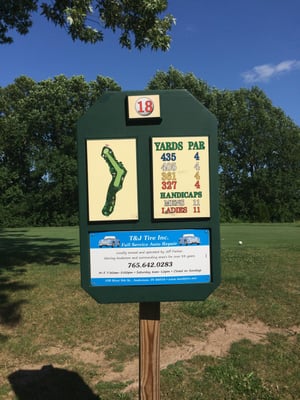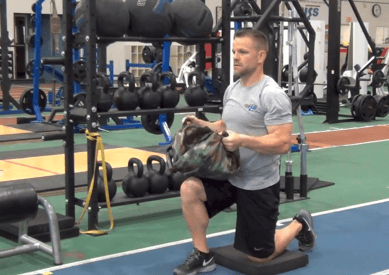 I celebrated my 40th birthday almost a year ago but postponed writing the “I’m 40 now” blog until now, mainly because it is a bit played out. But more importantly, I wanted to see what this 40 thing was all about before writing about it.
I celebrated my 40th birthday almost a year ago but postponed writing the “I’m 40 now” blog until now, mainly because it is a bit played out. But more importantly, I wanted to see what this 40 thing was all about before writing about it.
My 40th year on this planet started off great, spending that 18th of August completing 40 holes of golf with the wizard Alex Soller and a few other NIFS characters. It was a very memorable day, one that helped make me feel that 40 truly is just a number and I am still very capable of fitness feats. So I leaped into my 40th year like I have so many previously, with grit and an attitude that nothing will slow me down. I love to move around and I love to challenge myself, and I looked forward to what the year had in store for me.
Do You Really Start to Fall Apart When You Hit 40?
However, Father Time soon showed up with a message that a few adjustments must be considered if I was to continue to stay as active as I like to—nay, need to—be. It was crazy how it seemed so many things were going wrong physically, or it took so much longer to recover, or my drive to train hard lessened. I was reminded of Rocky’s last conversation with Apollo before the Drago fight, where Stallone attempted to talk Apollo out of the fight, stressing that they have changed and were no longer able to do what they used to.
I had always dismissed the messages from men my senior saying, “just you wait; things will change”; but it was becoming more and more apparent that those guys were right. I am not so naive that I would run obstacle course races and hit PRs in the gym left and right and at the level I was used to; I just didn’t expect so many reminders that I am not who I once was physically.
Check Yourself: Five Steps for Adjusting Workouts as You Age
Have you ever heard the saying “Father Time is undefeated”? Sometimes it’s a pretty tough pill to swallow, but here are a few system checks that I have made, which you can use to keep moving as the years keep coming.
 Check your expectations/mindset. Although it can be hard to handle at times (believe me), physical abilities are going to change and it is important to evaluate and adjust your expectations. This will help when you are faced with a physical challenge that you might have formerly handled pretty easily, to determine whether you should attempt it or live to fight another day. Your mindset is your story; now it’s just the next chapter. Negative self-talk about what you used to be able to do will not help in moving forward positively. I have found it helpful to manage the minimums and find that new normal. This will keep you safe both physically and mentally.
Check your expectations/mindset. Although it can be hard to handle at times (believe me), physical abilities are going to change and it is important to evaluate and adjust your expectations. This will help when you are faced with a physical challenge that you might have formerly handled pretty easily, to determine whether you should attempt it or live to fight another day. Your mindset is your story; now it’s just the next chapter. Negative self-talk about what you used to be able to do will not help in moving forward positively. I have found it helpful to manage the minimums and find that new normal. This will keep you safe both physically and mentally.- Check your warm-up. Maybe the days of performing a few stretches and jumping jacks and then hitting heavy back squats are gone, and that is okay. Taking a few more minutes to warm up properly, including mobility and core stability drills followed by dynamic stretching exercises, is key in avoiding big-time soreness and injury.
- Check your focus. My focus has changed a little from conquering any fitness challenge I can get my hands on to doing things that would allow me to continue to do things. I am no longer a competitive athlete nor am I all that interested in how much I bench press. What I am most interested in is staying active and being able to move around. Because of that, my focus has shifted a bit and my training has as well to accommodate it. Check your focus to make sure your training is providing what you need. If you are still chasing a strength goal or PR in a half-marathon, go get it, but do it safely. If your focus is like me and you want to be a great mover, fit and healthy, your training should be centered around that. NIFS can help with that!
- Check your workload. I am a staunch supporter of the ACSM’s guidelines for physical activity: getting 150 minutes of moderate-intensity exercise per week and 60 minutes of vigorous-intensity exercise; you pretty much need to move every day for at least 30 minutes. That shouldn’t change, but check your intensity and exercise selection for those training sessions to determine whether the workload matches what you checked from above. Also, you should consider the total time being active for the day and not just your training session. Training hard for 60 minutes followed by 8 hours of sitting can be just as bad as not training at all. Focus on staying active throughout the day by taking the stairs, parking farther away, or playing with the kids when you get home.
- Check your recovery. This has been the most impactful area for me entering my fourth decade: how I am approaching my recovery. I have always been pretty solid with my recovery strategies, but I’ve really had to up my game these past few years. One game changer: ICE! I never really used ice in the past, but now I ice almost every night, especially after a back injury that put me on the couch for a week. Regular massages and other soft-tissue treatments are strategies I highly recommend for recovery. But if I were to put a thumb on what has helped me the most for recovery, I have stopped trying to pack so much into a training session or a day, period. Take time to reflect and relax from the daily stressors, whatever that looks like to you. Enjoy fitness and moving every day, rest and recover properly, and you can keep moving for a lifetime!
As I said before, and it’s worth mentioning again, for me it has been about finding a new normal and managing the minimums. It’s so important that you wrap your mind around what your normal is and what makes you happy. It might not come with blue ribbons anymore, but every day is an event. Go out there and win the day!
This blog was written by Tony Maloney, ACSM Certified Exercise Physiologist and Fitness Center Manager. To find out more about the NIFS bloggers, click here.

